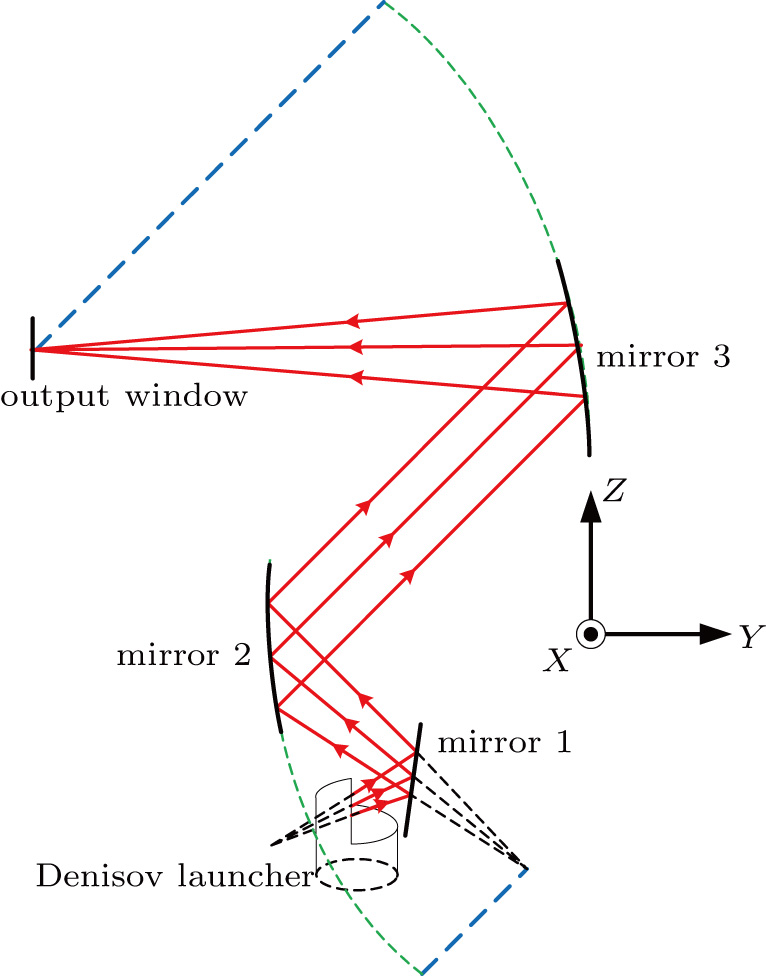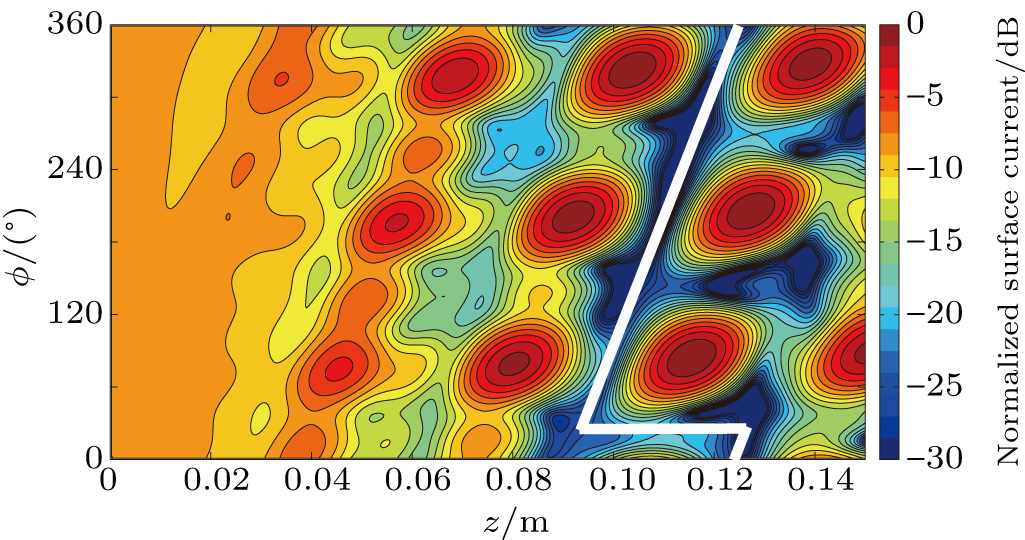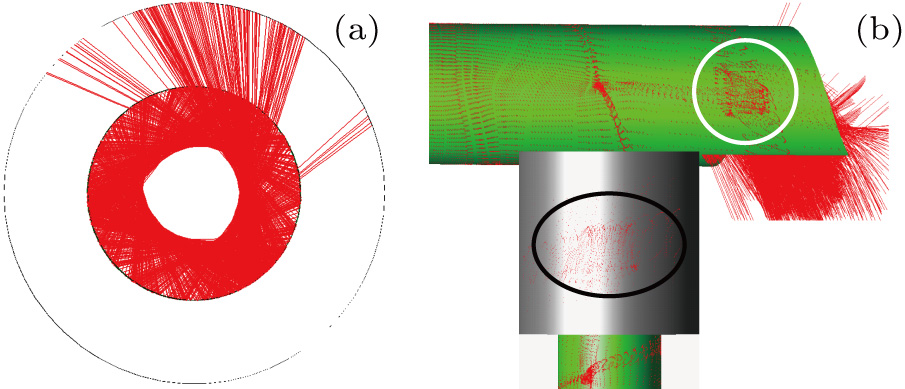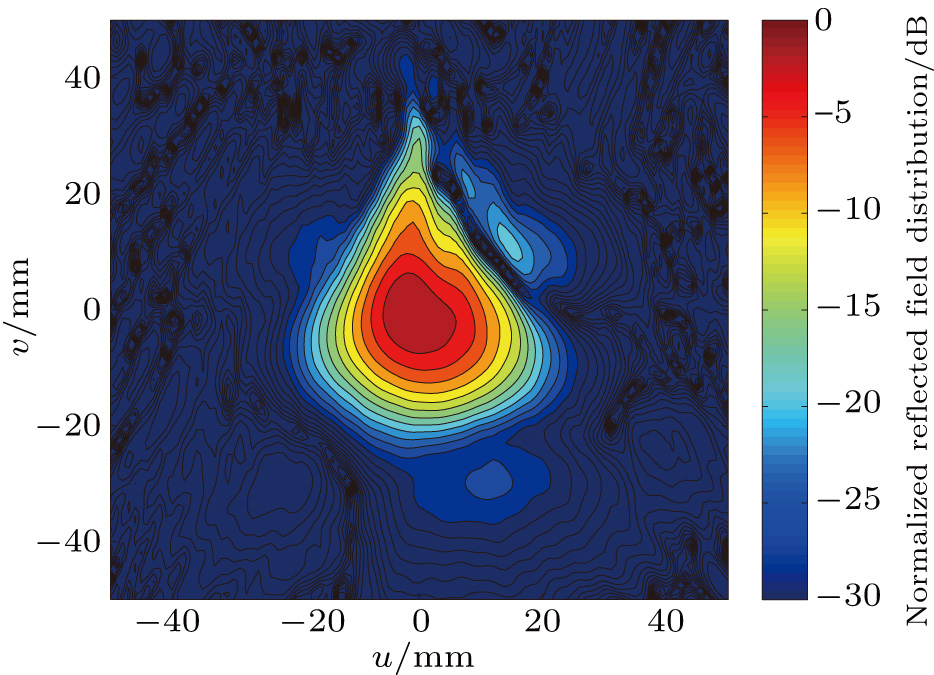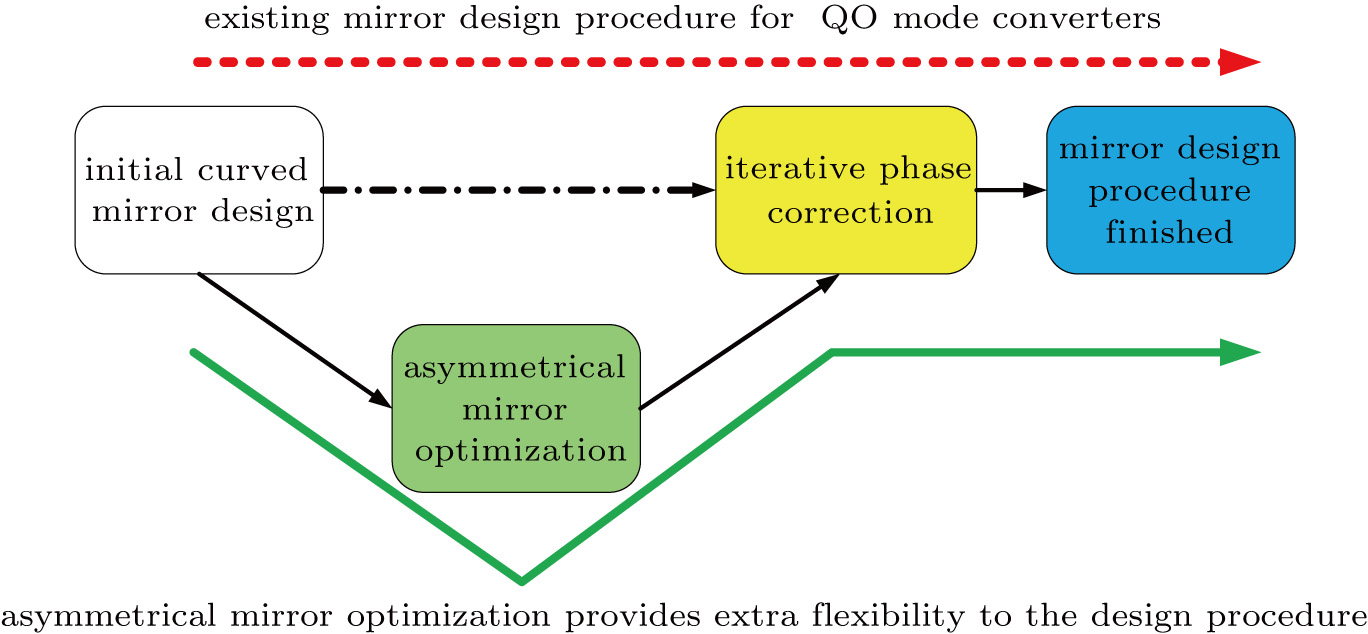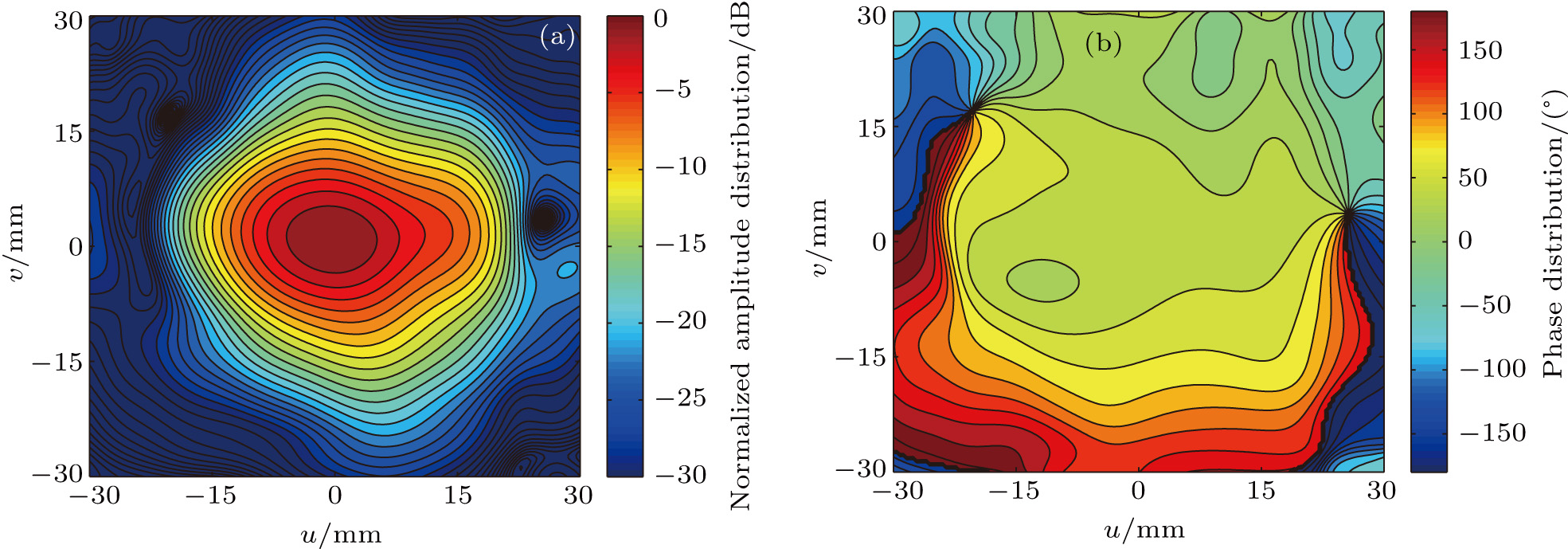† Corresponding author. E-mail:
We introduce an asymmetrical mirror design to a 140 GHz TE22,6 quasi-optical (QO) mode converter system to correct the asymmetry of the beam’s field distribution caused by the Denisov launcher. By such optimization, the output beam with better symmetrical distribution is obtained at the system’s output window. Based on the calculated results, the QO mode converter system’s performance is already satisfying without iterative phase correction. Scalar and vector correlation coefficients between the output beam and the fundamental Gaussian beam are respectively 98.4% and 93.0%, while the total power transmission efficiency of the converter system is 94.4%. The assistance of optical ray tracing to the design of such QO mode converters is introduced and discussed as well.
Gyrotrons are high-power microwave sources working in the millimeter and submillimeter wave bands.[1,2] Output electromagnetic (EM) waves of gyrotrons are normally in high-order cylindrical cavity modes, which are not suitable for direct utilization.[3] Therefore, quasi-optical (QO) mode converter systems are introduced to convert the high-order cavity modes of EM waves from gyrotrons into the fundamental Gaussian mode for further applications.[4–8] A typical QO mode converter consists of a waveguide launcher and a mirror system. The Denisov launcher[7] is used to preliminarily convert the high-order cylindrical cavity mode into the approximately fundamental Gaussian mode with its pre-shaped effect, while the mirror system converts the wave from the launcher into a highly pure Gaussian-like output beam.[8]
For a typical Denisov launcher, the radiated beam has a Gaussian-like but deformed distribution which requires both amplitude and phase optimization by the mirror system so that an output beam with desired Gaussian-like field distribution can be obtained. To eliminate the deviation between the field distributions of the output beam and the Gaussian mode, iterative algorithms for mirror optimization, such as the Katsenelenbaum–Semenov algorithm (KSA),[9,10] are widely adopted. The essential idea of KSA is utilizing mirror deformation to create optical path difference, which in turn changes the original phase distribution of the beam. Along with multi rounds of mirror optimization, the phase error between the distributions of the output beam and the Gaussian beam can be minimized. However, owing to its basic mechanism, KSA is inadequate in optimizing the large scale of asymmetrical amplitude distribution caused by the launcher’s structural asymmetry. To such kind of beam distortion, we propose a feasible approach that rectifies the field distribution during the beam-shaping process. A 140 GHz TE22,6 QO mode converter system is given in this paper, as shown in Fig.
In this paper, we discuss both design and optimization of the 140 GHz TE22,6 QO mode converter system assisted with optical ray tracing and confirmed by full-wave EM calculation. Section
Based on the coupled-mode theory, a Denisov launcher is designed with helical perturbation in the launcher wall surface.[11–13] The designed perturbation turns the waveguide eigenmode into a mixture of nine modes in order to approximate the Gaussian field distribution. The radius of the waveguide wall with perturbation is described by
 |
For a 140 GHz TE22,6 mode gyrotron with waveguide radius a = 16.8 mm, the amplitudes of the launcher wall perturbations are equal to δ1 = 0.058 mm and δ2 = 0.047 mm, which is shown in Fig.
 | Fig. 2. (color online) (a) Wall deformation of Denisov launcher and (b) power variation of mode composition along Z axis. |
Figure
The function of the mirror system concentrates on beam-shaping transformation which converts the beam from the waveguide launcher to an output beam with desired field distribution. Compared with the Vlasov launcher, the beam radiated by the Denisov launcher has an apparent divergent trend. This mirror system is specifically designed with a quasi-elliptical mirror (mirror 1) and two asymmetrical mirrors (mirror 2 and mirror 3). Mirror 1 focuses the beam preliminarily, while mirror 2 and mirror 3 converge the beam to the output window and correct the asymmetry of the beam’s distribution with their asymmetrical shapes.
Mirror 1 has a quasi-elliptical transverse cutting profile which focuses the beam from the caustic circle tangentially (shown in Fig.
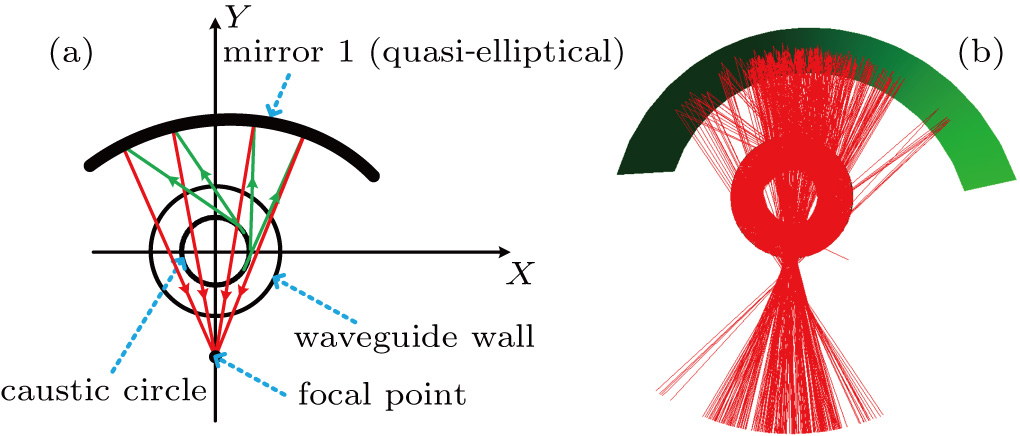 | Fig. 5. (color online) (a) Cross section of quasi-elliptical mirror 1 and (b) the corresponding ray tracing result. |
With functions of converging beam as well as optimizing its asymmetrical field distribution, mirror 2 and mirror 3 are designed together as a group. By sweeping part of an ellipse along the given path of a parabola, these two mirrors are preliminarily formed. The longitudinal cutting lines of mirror 2 and mirror 3 are parabolas which are depicted in Fig.
 | Fig. 6. (color online) Optical ray tracing result for the QO mode converter system (including ray distributions of three mirrors). |
As shown in Figs.
With the hope of correcting the asymmetry of the output wave’s field distribution, asymmetrical optimization is introduced to mirror 2 and mirror 3. As shown in Fig.
Take mirror 2 for example, to correct the bilaterally asymmetrical reflected field distribution (shown in Fig.
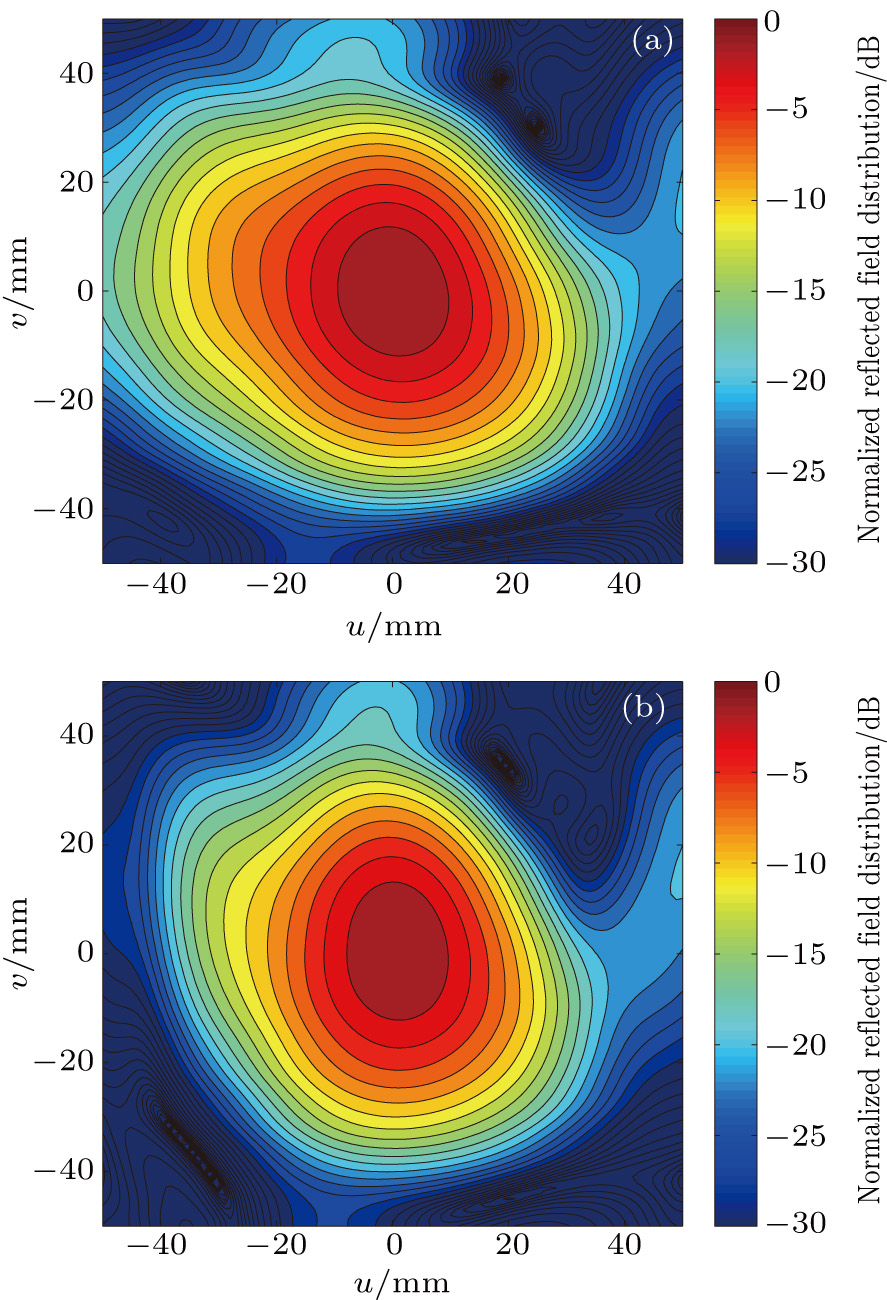 | Fig. 9. (color online) Comparison between (a) original and (b) asymmetrically optimized reflected field distributions of mirror 2. |
A similar optimization is brought to mirror 3, which is shown in Fig.
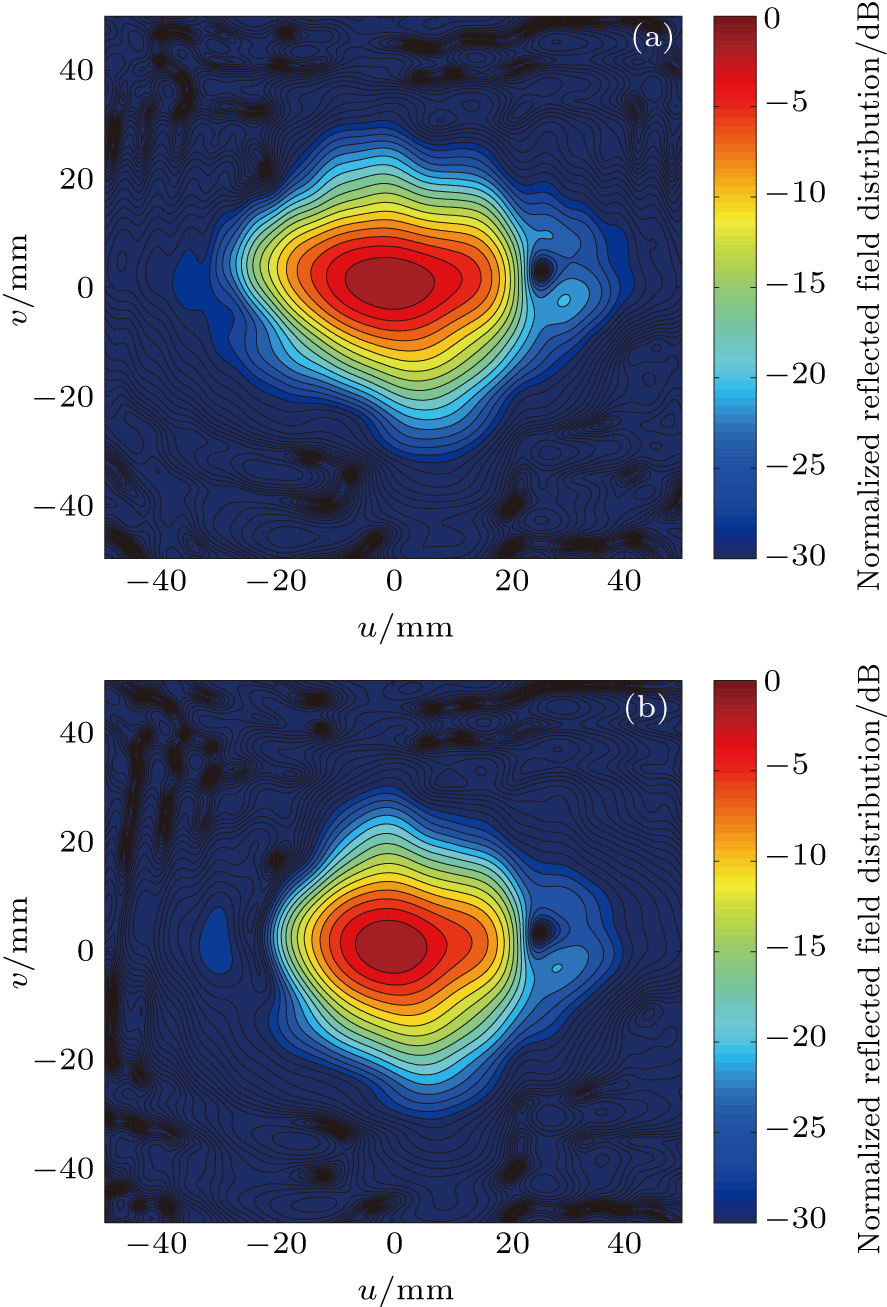 | Fig. 10. (color online) Comparison between (a) original and (b) asymmetrically optimized reflected field distributions of mirror 3 at the output window. |
As given in Fig.
After asymmetrical optimization mentioned above, full-wave EM calculation is performed for the 140-GHz TE22,6 QO mode converter system. The output beam is well focused at the window plane with more symmetrical Gaussian-like distribution. The amplitude and phase distributions at the output window are respectively given by Figs.
Scalar correlation coefficient ηs and vector correlation coefficient ηv are used[14,15] to demonstrate the agreement between the distributions of the output beam and the fundamental Gaussian beam
 |
 |
The power transmission efficiency of the converter system is defined by
 |



To highlight the optimization effect of the asymmetrical mirror design, iterative phase correction for the mirror system is not given in this paper, which means that this asymmetrically optimized 140 GHz TE22,6 QO mode converter system still has room for improvement with phase correcting techniques. Meanwhile, it has been demonstrated that the optical ray tracing technique can be used as an assistant tool for designing such high-frequency QO mode converters. There are good similarities between ray tracing and EM calculation when analyzing the beam path or field distribution. Despite its lack of accuracy, ray tracing is simple, revealing, and fast compared with EM calculation. The design schedule of the system can be accelerated with the assistance of both optical ray tracing and full-wave EM calculation.
A QO mode converter system for a 140 GHz, TE22,6 mode gyrotron is designed with the coupled-mode theory and optical ray tracing. An asymmetrical mirror design is introduced to optimize the asymmetrical field distribution of the beam from the Denisov launcher. A Gaussian conversion efficiency of 87.8% has been achieved for the optimized system which converts a TE22,6 cylindrical cavity mode into Gaussian mode. The output beam of the optimized converter system has better symmetrical Gaussian distribution with vector correlation coefficient up to ηv = 93.0% without iterative phase correction. During design procedure, we demonstrate that the optical ray tracing technique can be beneficial to designing such high frequency QO mode converters, even with the Denisov launcher working at high-order cavity modes.
| [1] | |
| [2] | |
| [3] | |
| [4] | |
| [5] | |
| [6] | |
| [7] | |
| [8] | |
| [9] | |
| [10] | |
| [11] | |
| [12] | |
| [13] | |
| [14] | |
| [15] |


